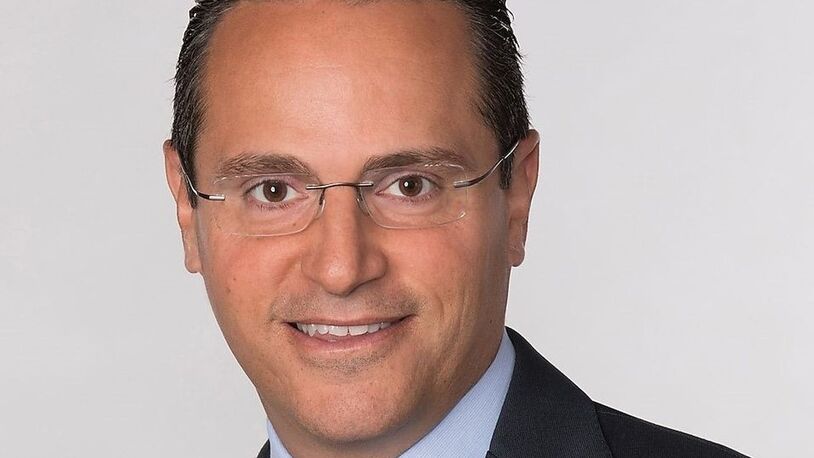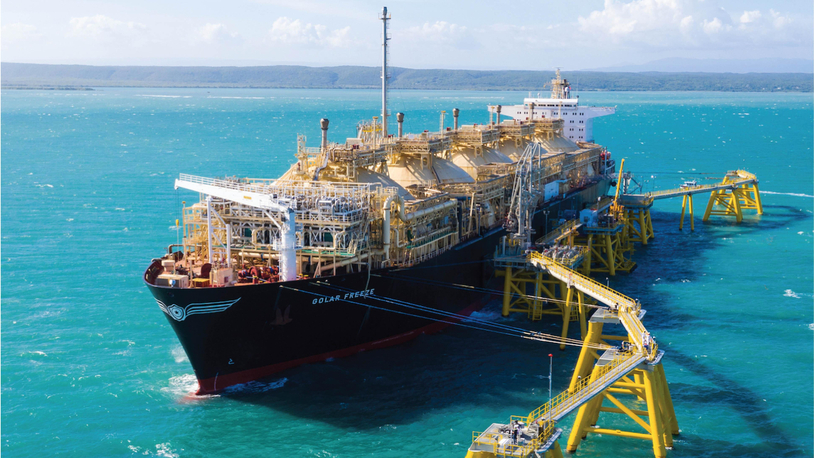Business Sectors
Contents
Global LPG ready for Qatari output
The LPG Global Transport pool of very large gas carriers (VLGCs) established by Mitsui OSK Lines (MOL) and Gulf LPG Transport Co of Qatar (Gulf LPG) in January 2009 has doubled in size over the past 16 months. The 50/50 joint venture was launched with an immediate fleet of eight vessels but the pool has since been swelled with the delivery of eight newbuildings to the two partners. The oldest ship in the fleet was sold for recycling in February 2010.
Although the pool was formed at a time when VLGC freight rates were at rock bottom and barely covering operating costs, and 2009 as a whole turned out to be a difficult year for VLGCs, both MOL and Gulf LPG are bullish about the future expansion of global LPG seaborne trade, not least because of rising exports from Qatar.
Qatar is in the final stages of its LNG masterplan, which encompasses the provision of 14 LNG production trains at the port of Ras Laffan (pictured). The last six of these facilities are called Super Trains, the largest such units in the world, and each is able to produce 7.8 million tonnes of LNG per annum (mta). Four Super Trains have now been commissioned and, when the final two are completed by the end of 2010, Qatar will have all 14 LNG trains in operation. Qatargas and RasGas will each operate seven trains.
The 14 trains will provide Qatar with the ability to produce up to 77 mta of LNG and, in association with this output, 12 mta of LPG. There have been minor delays in bringing some of these LNG trains at Ras Laffan onstream but, considering the scale of the endeavour, the progress made in realising this new gas production capacity is impressive by any measure.
An output of 77 mta of LNG will ensure that Qatar’s natural gas exports are three times greater than its nearest rival’s, while an output of 12 mta of LPG will propel Qatar into the No 1 slot in the LPG exporters league table. LPG exports from Ras Laffan were building towards 6 mta towards the end of 2009. While it may take up to two years before the full production potential is realised, Qatar is already a major player in the LPG sector.
Gulf LPG is a joint venture between Qatar Gas Transport Co (Nakilat) and Qatar Shipping Co (Q Ship). Nakilat is already the world’s largest operator of LNG carriers. Among its LNGC fleet are 31 Q-flex ships of 216,000m3 and 14 Q-max vessels of 265,000m3. These are the world’s largest LNG carriers.
Compared with its LNGC commitment, the Nakilat/Q Ship involvement in LPGC ownership through Gulf LPG is relatively modest. However, the pool arrangement with MOL, a major player in the LPG sector, will help establish Nakilat as a top name in LPG shipping as Qatari LPG exports build towards plateau production levels.
Gulf LPG and MOL have jointly incorporated LPG Global Transport Management Inc to manage the pool’s business operations. In addition, Nakilat has appointed Shell to undertake the technical management of the LPG carriers it contributes to the pool, mirroring a similar arrangement it has with Shell in the LNGC sector.
LPG Global Transport points out that through the rapid buildup of its fleet, as shown in the accompanying table, it is able to offer enhanced services to LPG charterers and create efficiencies by optimising voyage costs through efficient deployment of the combined fleet.
Flow management of the substantial volumes of LPG, condensate and sulphur byproducts associated with the buildup towards a maximum output of 77 mta of LNG has necessitated careful logistics planning at Ras Laffan. At maximum volumes the production rates for these byproducts will be approximately 500,000 barrels per day for condensate, 20,000 tonnes per day for propane, 13,000 tonnes per day for butane and 12,000 tonnes per day for sulphur.
Common storage and loading facilities have been provided at Ras Laffan for both the LNG and the various byproducts from the eight newest Qatargas and RasGas liquefaction trains. The arrangement enables all the exports to be handled in an integrated way and allows the efficiency of the overall operation to be optimised. The eight most recent trains to be built at Ras Laffan, including the six Super Trains, have the ability to separate out the byproduct streams and to produce an aggregate of 56 mta of LNG.
The common infrastructure for these eight trains comprises the common lean LNG facility (CLLNG), the common LPG facility (CLPG), the common condensate storage and loading facility (CCSL) and the common sulphur facility (CSF). Qatargas is responsible for CLLNG and CSF while RasGas handles CLPG and CCSL.
The approach has realised significant savings in terms of storage volumes and jetty arrangements compared with that which would have been required if all the liquefaction trains were provided with their own stand-alone facilities. For example, the CLPG complex operated by RasGas is an integrated storage and loading terminal able to despatch butane and propane cargoes gathered from all the port’s fractionation facilities.
The CLPG terminal includes six refrigerated LPG storage tanks, inlet and export product meters and three LPG carrier berths. Arriving from the fractionators as a warm pressurised liquid, the LPG is refrigerated at the CLPG complex and stored at atmospheric pressure, ready for export. The 33,000 tonnes/day design capacity of the facility is equivalent to exports of 12 million tonnes of LPG per annum. Space is available for a fourth LPG berth if a decision is made to increase LPG production.
Related to this Story
Events
TUGTECHNOLOGY '25
Reefer container market outlook: Trade disruption, demand shifts & the role of technology
Asia Maritime & Offshore Webinar Week 2025
Marine Lubricants Webinar Week 2025
© 2024 Riviera Maritime Media Ltd.













